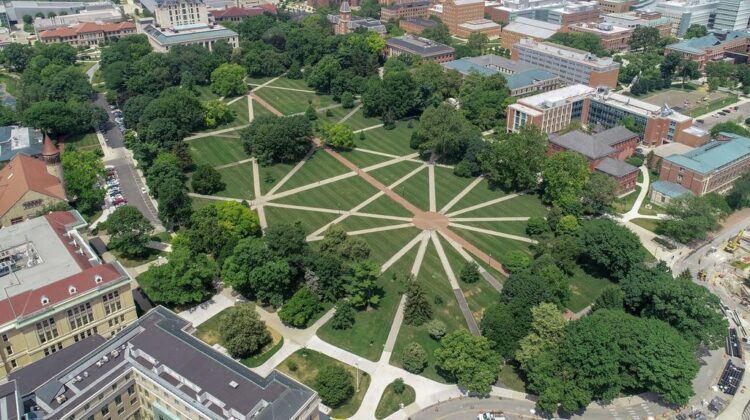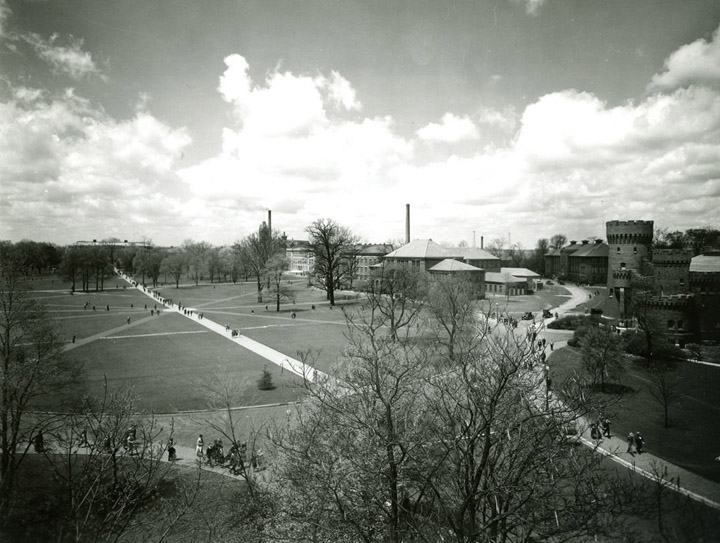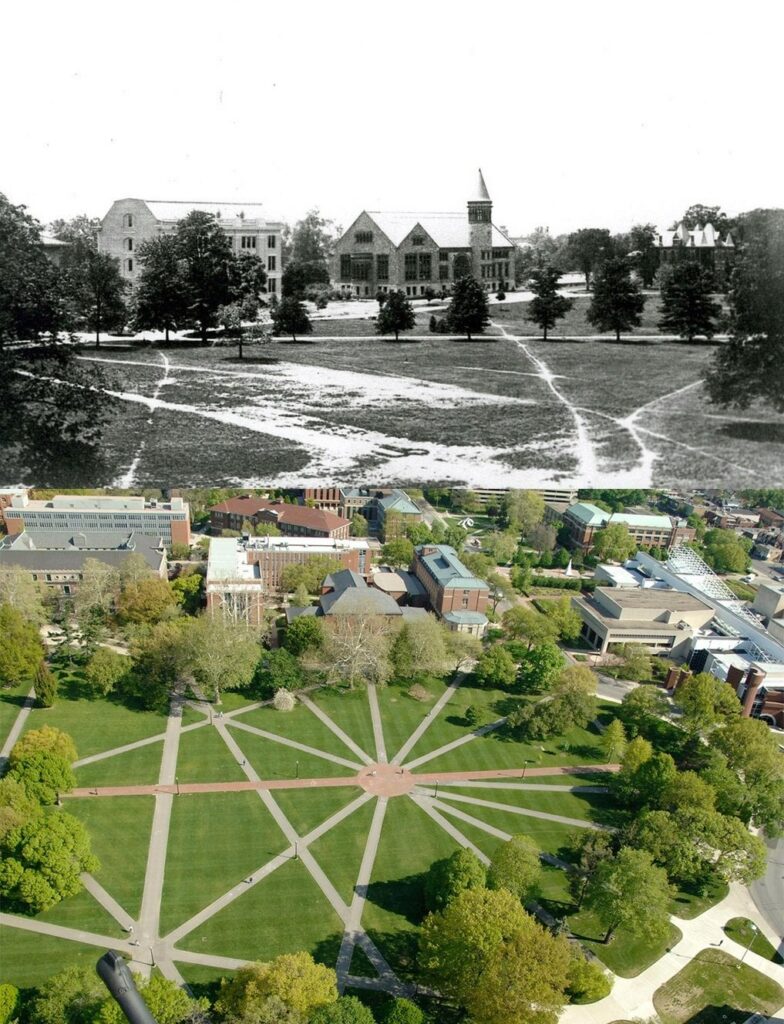
The Ohio State University campus is renowned for its stunning architecture and beautiful green spaces. Among these, the Oval and Long Walk stand out as iconic landmarks that have shaped the university’s identity. However, what many may not know is that these pathways were not part of the original campus design but emerged organically over time, reflecting the desires and habits of the students themselves.

The Accidental Oval
Initially, the Ohio State campus was laid out in a more traditional English manor style, with paths crisscrossing what is now known as the Oval. However, as the university grew and new buildings were constructed in the late 19th century, a central green space began to emerge. By 1901, this space had solidified into the Oval, a beloved gathering place for students and faculty alike.

The Long Walk: A Formalization of Student Paths
The Long Walk, a grand boulevard stretching from the Oval to the Ohio State Museum, was added to the campus in 1914 under the guidance of University Architect Joseph N. Bradford. Bradford’s intention was to formalize the existing paths that students had naturally worn into the landscape, creating a more cohesive and visually appealing campus.
Despite its significance, the Long Walk was initially met with little fanfare. In fact, in the 1920s and 1930s, freshmen were even forbidden to use the Long Walk, with penalties enforced by upperclassmen. However, over time, the Long Walk has become a cherished symbol of Ohio State University, representing tradition, scholarship, and community.

The Oval and Long Walk at Ohio State University are testaments to the power of student agency and the organic evolution of a campus. These iconic pathways, born from the desires and habits of generations of students, have become integral parts of the university’s identity. Their story serves as a reminder that even the most carefully planned spaces can be shaped by the unexpected and the unplanned.

Leave a Reply